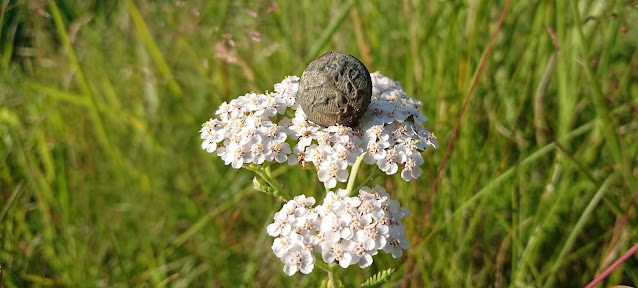Researching the Hanko Front, Part I
It was again time to head to the familiar city of Hanko, where we had conducted conflict archaeological research for the past few years. After finally finishing the excavations of the German transit camp at Cape Tulliniemi, it was time to continue with a new location. After the launch of Hanko 1941 research project, which concentrates on the material heritage of the Hanko Front, we had chosen to start the series of excavations from the Finnish side of the battlements.
 |
| Finnish military shoulder button from a burned down dugout. |
In the Moscow Peace Treaty that ended the Winter War, Hanko was leased to the Soviet Union as a naval base. As the possibility of further battles loomed in the air, the Soviet troops fortified the peninsula with trenches, bunkers and multiple other underground constructions. As the Continuation War started in June 1941, the Hanko Front saw some skirmishes as well - as well as bloody battles for the control of surrounding islands. However, the situation did not last for long, as Soviet troops were forced to evacuate Hanko in early December 1941.
After years of excavating the German transit camp at Tulliniemi (eg. 2016, 2018 and 2019), the launch of Hanko 1941 project changed our focus to sites of a whole different nature. While the transit camp was relatively far from the raging war, now we would be excavating literally the front lines. In between the trenches and dugouts, our team of archaeologists and archaeology students was joined by the participants from Hangö Sommaruni ("Hanko Summer University").
 |
| Finnish shoulder board insignia. |
During the course of two weeks, we opened four separate excavation trenches. In the next blog posts, I will introduce two of them - observation post on the "Hillock of Death" and a burned out dugout called "Hamster's Nest" by Åke Kretz in his book Frontvardag.



Comments
Post a Comment